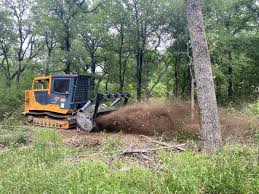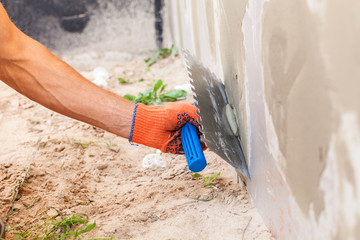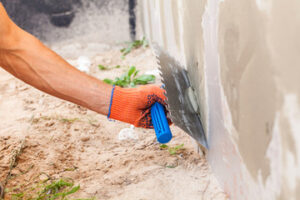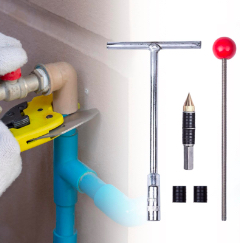Landscaping transforms outdoor spaces into beautiful and functional areas. It combines art and science to create harmonious environments. Skilled landscaping enhances both aesthetic appeal and practical use. Well-planned designs elevate the overall value of a property.
Modern landscaping focuses on balance and sustainability. Designers incorporate natural elements to complement existing structures. Thoughtful plant selection ensures year-round beauty. Efficient layouts maximize space and flow. Visit Website to learn more.
Outdoor spaces require careful planning to meet different needs. Some areas prioritize relaxation, while others focus on entertainment. Strategic placement of plants and structures creates a seamless blend. Cohesive design fosters comfort and usability.
Soil quality affects plant health and growth. Professional landscapers analyze soil composition to determine the best plants. Amending soil with nutrients improves fertility and drainage. Healthy soil supports long-term plant success.
Water management is a key element in landscaping. Efficient irrigation systems prevent water waste and overwatering. Drip systems deliver moisture directly to roots. Proper drainage prevents flooding and erosion.
Seasonal changes influence landscaping choices. Hardy plants thrive in varying weather conditions. Seasonal blooms provide color and texture throughout the year. Strategic planting ensures continuous visual interest.
Lighting enhances the beauty and safety of outdoor spaces. Pathway lights improve visibility and create ambiance. Uplighting highlights architectural and natural features. Well-placed lighting extends the usability of outdoor areas.
Privacy is often a goal in residential landscaping. Hedges and trees act as natural barriers. Decorative screens and trellises provide additional coverage. Thoughtful placement creates a sense of seclusion.
Eco-friendly landscaping reduces environmental impact. Native plants require less water and maintenance. Permeable surfaces allow rainwater to absorb into the ground. Sustainable materials reduce carbon footprints.
Outdoor furniture adds comfort and functionality. Weather-resistant materials ensure longevity. Well-positioned seating encourages relaxation and conversation. Furniture placement complements the overall design.
Pathways create structure and flow within a landscape. Gravel, stone, and wood offer distinct textures and styles. Curved paths soften harsh lines and create a natural feel. Straight paths provide clear direction and organization.
Plant layering creates depth and visual interest. Tall trees provide shade and structure. Mid-level shrubs add fullness and texture. Groundcover plants fill gaps and prevent soil erosion.
Color theory plays a role in landscaping design. Complementary colors create harmony and balance. Warm tones create a welcoming atmosphere. Cool tones evoke calm and relaxation.
Hardscaping elements define outdoor spaces. Patios, decks, and retaining walls provide functional areas. Stone and concrete add texture and contrast. Well-designed hardscaping integrates with natural elements.
Water features enhance tranquility and visual appeal. Fountains and ponds create soothing sounds. Reflecting pools add elegance and symmetry. Moving water attracts birds and beneficial insects.
Landscaping supports biodiversity and local ecosystems. Pollinator-friendly plants attract bees and butterflies. Diverse plantings provide habitat for wildlife. Balanced ecosystems promote natural pest control.
Wind protection enhances outdoor comfort. Strategic planting of trees and shrubs reduces wind intensity. Trellises and fences provide additional shielding. Reduced wind exposure improves plant health.
Vertical gardening maximizes limited space. Wall-mounted planters and trellises support climbing plants. Vertical elements create depth and visual interest. Compact designs work well in urban settings.
Low-maintenance landscaping suits busy lifestyles. Drought-tolerant plants require less watering. Mulch reduces weed growth and retains moisture. Automatic irrigation systems simplify maintenance.
Outdoor kitchens extend living space. Built-in grills and prep areas support entertaining. Durable materials withstand weather exposure. Functional layouts encourage social interaction.
Fire features add warmth and ambiance. Fire pits create gathering points for relaxation. Gas and wood-burning options offer versatility. Safe placement ensures comfort and usability.
Garden borders define spaces and create order. Stone, wood, and metal provide distinct styles. Raised beds improve soil quality and drainage. Borders protect plants from foot traffic and pests.
Wildlife-friendly landscaping attracts beneficial species. Bird feeders and baths support local bird populations. Native plants provide food and shelter. Balanced ecosystems create sustainable landscapes.
Climate considerations shape plant and material selection. Heat-tolerant plants thrive in sunny areas. Shade-loving species flourish under tree canopies. Climate-specific choices improve long-term success.
Rain gardens manage runoff and improve soil health. Depressions collect rainwater and filter pollutants. Native plants thrive in wet conditions. Rain gardens reduce erosion and water waste.
Naturalistic designs mimic local landscapes. Flowing lines and organic shapes create a relaxed atmosphere. Mixed plantings add texture and variety. Balanced designs blend with the environment.
Colorful foliage adds vibrancy beyond blooming seasons. Ornamental grasses provide year-round interest. Variegated leaves contrast with solid greens. Seasonal changes keep landscapes dynamic.
Rock gardens create low-maintenance beauty. Stones and drought-tolerant plants thrive in arid conditions. Succulents and cacti require minimal care. Rock gardens add texture and visual contrast.
Edible landscaping combines beauty and function. Fruit trees, herbs, and vegetables provide fresh produce. Mixed plantings create a natural look. Functional gardens enhance food security and sustainability.
Symmetry and balance create formal garden styles. Mirrored plantings and geometric patterns provide structure. Repetition reinforces order and unity. Balanced designs create visual calmness.
Modern landscapes incorporate artistic elements. Sculptures and installations create focal points. Decorative containers add height and texture. Art pieces reflect personal style and taste.
Perennial plants provide lasting beauty. They return year after year with minimal care. Grouping perennials creates cohesive color schemes. Seasonal blooms enhance variety and depth.
Shrub pruning maintains structure and health. Shaped hedges create clean lines and privacy. Selective trimming encourages growth and flowering. Well-maintained shrubs define borders and pathways.
Tree planting adds height and shade. Mature trees provide natural cooling and wind protection. Deep roots stabilize soil and prevent erosion. Tree placement influences light and temperature balance.
Native plants adapt well to local conditions. They require less water and maintenance. Indigenous species support local wildlife. Native plantings create sustainable landscapes.
Pergolas and arbors create shaded areas. Climbing plants enhance natural beauty. Open designs allow airflow and light penetration. Shaded areas improve comfort and usability.
Outdoor soundscaping enhances relaxation. Wind chimes and water features create soothing sounds. Natural barriers reduce traffic noise. Soundscaping improves overall atmosphere.
Potted plants offer flexibility and style. Containers allow seasonal plant changes. Mixed heights create depth and interest. Portable designs adjust to changing layouts.
Artificial turf provides a low-maintenance alternative to grass. It requires no watering or mowing. Soft textures mimic natural grass. Artificial surfaces suit high-traffic areas.
Composting supports healthy soil. Organic matter improves nutrient levels and moisture retention. Compost bins reduce waste and create rich soil. Healthy soil enhances plant growth.
Garden art adds personality to outdoor spaces. Whimsical sculptures and colorful pots reflect style. Art pieces create focal points and conversation starters. Personal touches enhance connection to the space.
Lighting control systems enhance flexibility. Programmable timers adjust light levels. Motion sensors improve security and energy efficiency. Controlled lighting creates dynamic evening atmospheres.
Pet-friendly landscaping ensures animal safety. Soft surfaces protect paws and joints. Non-toxic plants prevent health risks. Secure fencing creates safe outdoor play areas.
Seasonal plant rotation maintains visual interest. Cool-season plants thrive in early spring and fall. Warm-season species flourish in summer heat. Rotating plants ensures consistent color and texture.
Creative edging defines garden boundaries. Natural stone, brick, and wood offer different looks. Curved and straight lines create distinct effects. Well-defined edges enhance overall design.
Landscaping creates a seamless connection between indoors and outdoors. Open layouts and large windows enhance views. Coordinated design elements unify interior and exterior styles. Balanced transitions improve flow and continuity.




